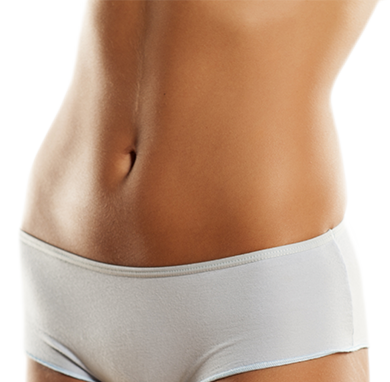What is Liposuction?
The goal of liposuction in Boston and Worcester, Massachusetts is to remove deposits of excess fat from the hips, thighs, waist, abdomen, buttocks, upper arms, back, and more. For many patients, exercise and healthy eating alone cannot eliminate stubborn pockets of fat. Liposuction is a great option to safety and quickly eliminate this fat.
Am I a good candidate for liposuction?
Ideal candidates for liposuction are at a stable weight, but still desire to improve their body shape and contours. They should also have decent elasticity in the skin, so when the fat is removed their skin achieves a smooth appearance. Many individuals can receive liposuction, though those with greater skin elasticity will achieve the best results. It is important to note that liposuction should not be thought of as a solution to obesity or a weight loss technique.
Liposuction Patient #4
A woman in her late 30s who is shown before and again, 3 months after liposuction of the hips and lower back. An abdominoplasty was performed at the same time.
A woman in her late 30s is shown before and again, 3 months after lipo abdominoplasty with floating of the umbilicus and liposuction of the hips and lower back. Power-assisted liposuction was performed using the S.A.F.E. technique. With a “float” of the umbilicus the umbilicus is detached and “floated: down. It works best in patients with a high umbilicus and not as much laxity of the upper abdominal skin.
Abdominoplasty and Liposuction Patient #53
Details: An Asian mother of 2 in her early 40s who is bothered by the bulging of her abdomen in fitted clothing and in a bathing suit. She is also bothered by back rolls and “muffin tops”. She is shown before and again, 5 ½ months after abdominoplasty with liposuction of the flanks and back rolls as an outpatient. Exparel was used to limit postoperative pain.
Lipo Abdominplasty #49
More on this patient
in the blog!
Liposuction- Patient 121
A woman in her early 30’s with Steatopygia , a lipodystrophy of excess fat in the buttock area. Sometimes called a “duck tail”. She is over her ideal body weight for someone 5’ 5 ½” at 202 lbs. Liposuction is not a treatment for being overweight but can selectively remove excess fat. In her case I performed power assisted liposuction using the S.A.F.E. technique
( Separation/Aspiration/Fat Equalization) and was able to obtain a good improvement with the removal of 5200 cc of lipo-aspirate from the lower back/ upper buttocks, flanks and inner thighs. She is shown at 6 weeks after her procedure and is thrilled with her early improvement. Swelling after liposuction typically takes 6 months to completely resolve, so we can expect further small improvement with time. She is thrilled with the new shape and projection of her buttocks in and out of clothing and the improvement in her waist and inner thighs.
Liposuction- Patient 120
An Asian woman in her mid 20’s with a fatty deposit in her right axilla ( axillary lipodystrophy) which began when she had breast development and has not changed since. She is shown before and again, 6 weeks after power assisted liposuction of the right axilla using the S.A.F.E. technique (Separation Aspiration Fat Equalization) At 6 weeks she will typically still have some swelling from the surgery that should continue to decrease over the next 6 months.
Update: She is now seen 6 months after surgery. She has maintained an excellent contour and all swelling has now resolved.
How is liposuction performed?
Liposuction can be done with the help of local anesthesia, general anesthesia, or intravenous sedation. There are many liposuction techniques available today, including traditional liposuction, power-assisted liposuction, ultrasonic liposuction, and laser lipolysis.
During traditional liposuction, a thin tube, or a cannula, will be inserted though small incisions to loosen any excess fat with a back and forth motion. The loose fat is then suctioned out using a surgical vacuum that is connected to the cannula. Power-assisted liposuction uses cannulas that are located on a powered hand piece. With this technique, there is less manual exertion required by the surgeon.
During ultrasonic liposuction, ultrasonic technology is used to emulsify excess fat. Lastly, laser lipolysis, also known as SmartLipo, uses laser light to emulsify fat. Dr. Hall will help you choose a technique that is best suited to meet your goals.
What should I expect during recovery?
Patients should wear a compression garment after liposuction to control any swelling. Drains may also be used to collect any excess fluids. Swelling may take several months to fully subside, and your new body contours will improve with recovery. It is imperative to follow the liposuction recovery instructions provided by Dr. Hall for a safe and efficient recovery.

“Dr. Hall and his staff are great. They are friendly and made me feel comfortable. Dr. Hall is very knowledgeable and put me at ease regarding my surgery.”
Real Patient Ratings™ Review







Cosmetic & Plastic Surgery Specialist
"I treat my patients like I would treat
- Jonathan D. Hall, MD, FACSmembers of my own family."
Schedule Consultation